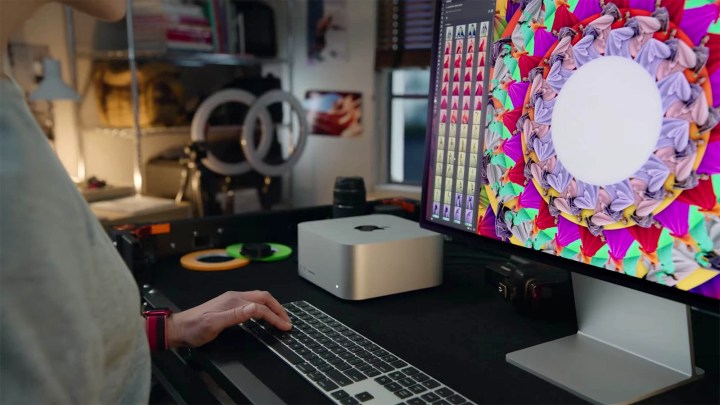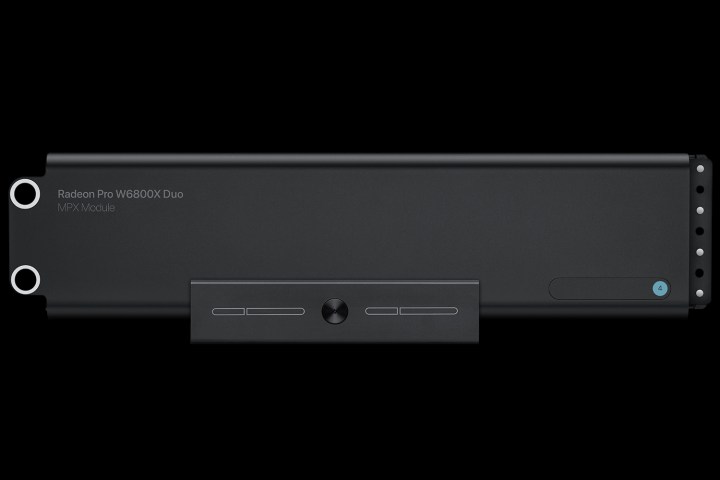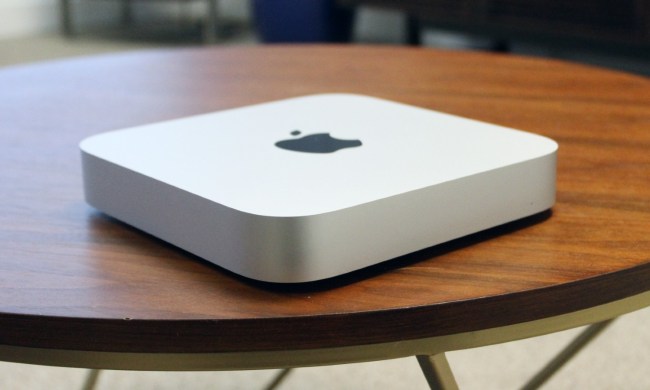Apple announced a new desktop at its 2022 spring event: The Mac Studio. It’s the first time Apple has paid any mind to desktops targeted at creative pros in more than two years, and it highlights one of the biggest shortcomings of Apple’s last attempt, the Mac Pro.
The Mac Pro made it look like Apple was committing to modular designs, but the Mac Studio shows that the company may be abandoning that philosophy. Given how poorly the Mac Pro has held up over the past few years, it’s a good thing that the Mac Studio didn’t adopt its modular approach.
Modular (with an asterisk)

When Apple announced the Mac Pro in 2019, it was a revelation. In response to years of complaints from creative pros, Apple decided to make the Mac Pro modular using Mac Pro Expansion Modules (MPX). MPX modules are essentially closed boxes that you can slot into the Mac Pro to upgrade it or add more functionality.
It’s a great concept, but it hasn’t exactly held up. Apple seemed to abandon the idea by mid-2021 before introducing a range of new MPX modules for AMD’s latest Radeon Pro graphics cards. Users can always slot in their own PCIe cards, too, so you can use a graphics card you like or a PCIe expansion card (as long as it draws less than 300 watts). PCIe support certainly helps the Mac Pro, but that kind of defeats the purpose of having a modular machine.
There are still a number of other issues. For one, Apple doesn’t offer any MPX modules for Nvidia graphics cards, and users are limited to whatever MPX modules Apple wants to release. With two years separating the first major addition to the range, Pro users are often stuck waiting for an upgrade, even if it’s available for other machines.

The Mac Studio isn’t modular, and in nearly all cases, I’d argue that some modularity is better than none. The Mac Pro hasn’t produced much fruit with MPX, though, which is important to remember for machines that cost upwards of $50,000.
And it’s even more important when a $4,000 machine can offer better performance.
Pricing applies

It’s hard to argue in favor of MPX when multiple modules cost more than the Mac Studio. A big reason to go modular is price; instead of buying a whole new Mac, you can just slot in a new MPX module. With the Mac Studio and M1 Ultra chip in the mix, the pricing balance has shifted toward buying a new machine.
The flagship Radeon W6900X MPX module will run you $6,000. That’s that’s the same price as a Mac Studio with an M1 Max AND a Mac Studio with an M1 Ultra. A Radeon Pro Vega II MPX module costs more than a Mac Studio with the M1 Max, and that GPU is coming up on three years old.
These graphics cards can vastly outclass Apple’s silicon, and they come with validated drivers for creative pros. But that’s not the point. With a modular system like the Mac Pro offers, users are limited not only by the modules Apple decides to sell, but also the prices Apple decides to set.
There’s a premium on new components, but the egregious pricing comes from older MPX modules. The AMD Radeon Pro Vega II MPX module is the same $2,200 it was when Apple introduced it, and that’s a tough pill to swallow. Modularity requires commitment, and all Apple has committed to is selling mostly the same slate of MPX modules that were available at launch, and at the same price.
The benefit of a machine like the Mac Studio is that it doesn’t require all of the extra work, and it’s much cheaper as a result. You can spend tens of thousands of dollars on a Mac Pro for the opportunity to overpay for upgrades down the line, or you can save a lot of money and headaches by buying a machine that has everything already included. With Apple, at least, that closed box costs significantly less.
Beyond MPX

Of course, computer components are outclassed as new generations are released. Apple’s pricing doesn’t help the matter, but it’s hard to place blame on Apple for designing a machine in 2019 with 2019 components in mind, and it’s not surprising that a machine introduced in 2022 offers more power (based on Apple’s own claims, at least).
Modularity has limits, and the Mac Studio exposes those limits. Sure, you can slot in one of the latest Radeon Pro graphics cards, but what about upgrading the machine to PCIe 4.0? What about DDR5 memory or Thunderbolt 4?
The idea of a modular PC has a fundamental flaw — everything needs to plug into something. That’s something we’ve seen time and again with machines like the Framework Laptop. You may be able to swap in a new GPU or PCIe expansion card, but you’re still limited by the motherboard and processor you pick in the Mac Pro.
You can’t upgrade the Mac Studio at all, but it still makes the Mac Pro and its half-hearted commitment to modularity look silly. At least you won’t be stuck with a vastly overpriced machine with limited options for upgrades and platform features that are almost three years out of date.
Want modular? Build a PC

To be clear, I’m not arguing against modularity — I’m just arguing against Apple’s version of it. Ideally, you would be able to swap components for the Mac Pro and Mac Studio like you can with a PC, but Apple has made it clear with machines like the iMac Pro that it’s not interested in doing that.
For creative professionals, it’s time to stop messing around — Apple isn’t building a modular desktop. If upgrades are a concern, it’s always a better idea to order or build a PC. You’re never limited by upgrades, and you have the option to use chips like AMD’s new Threadripper Pro 5000 CPUs, which look like the performance champion for professional workloads.
At the very least, the Mac Studio knows what it is. It’s a desktop for creative pros that you’ll need to replace in a few years. That’s a lot better and cheaper than a desktop that claims modularity and charges for the privilege, especially when a machine that’s a fraction of price could offer better performance.



